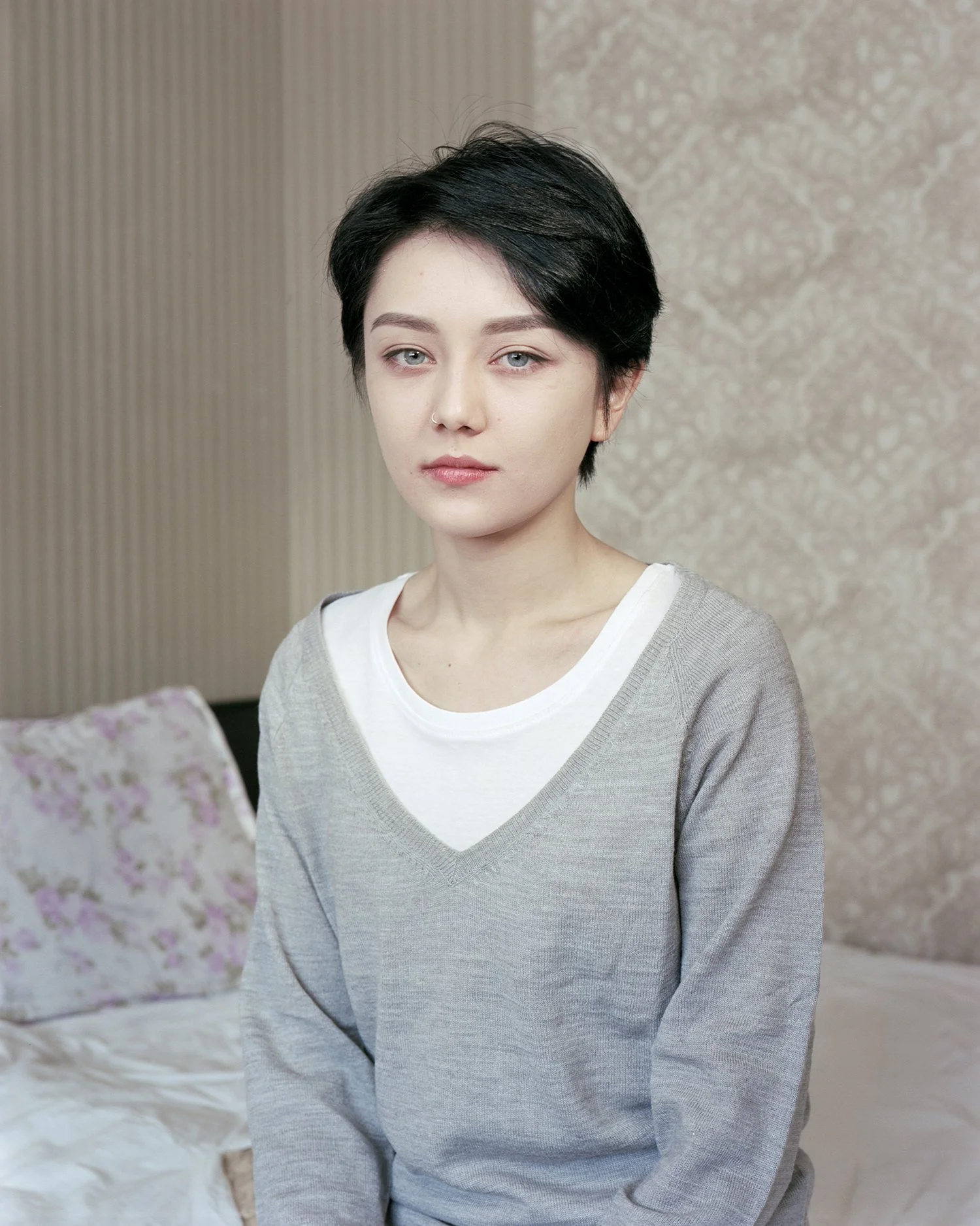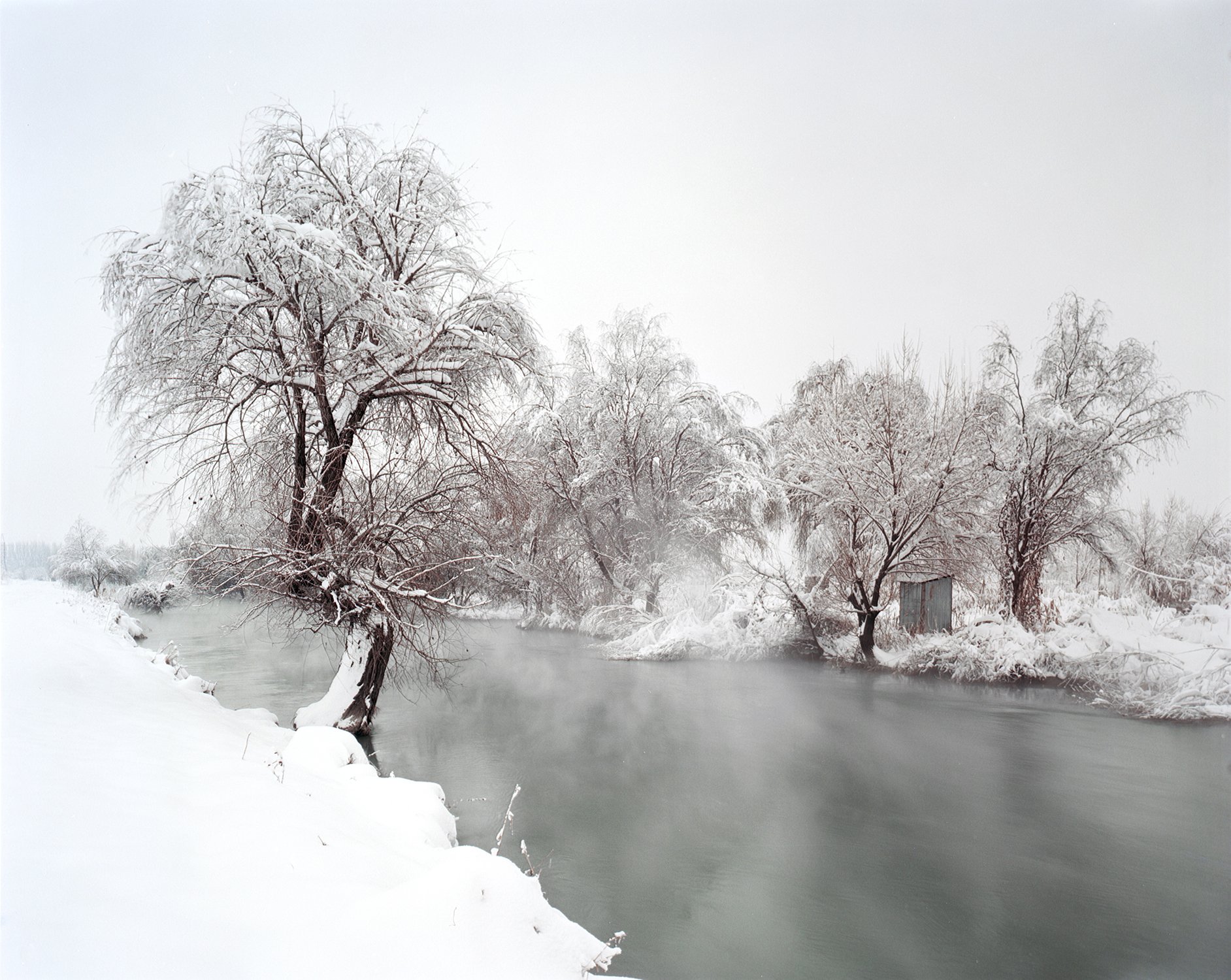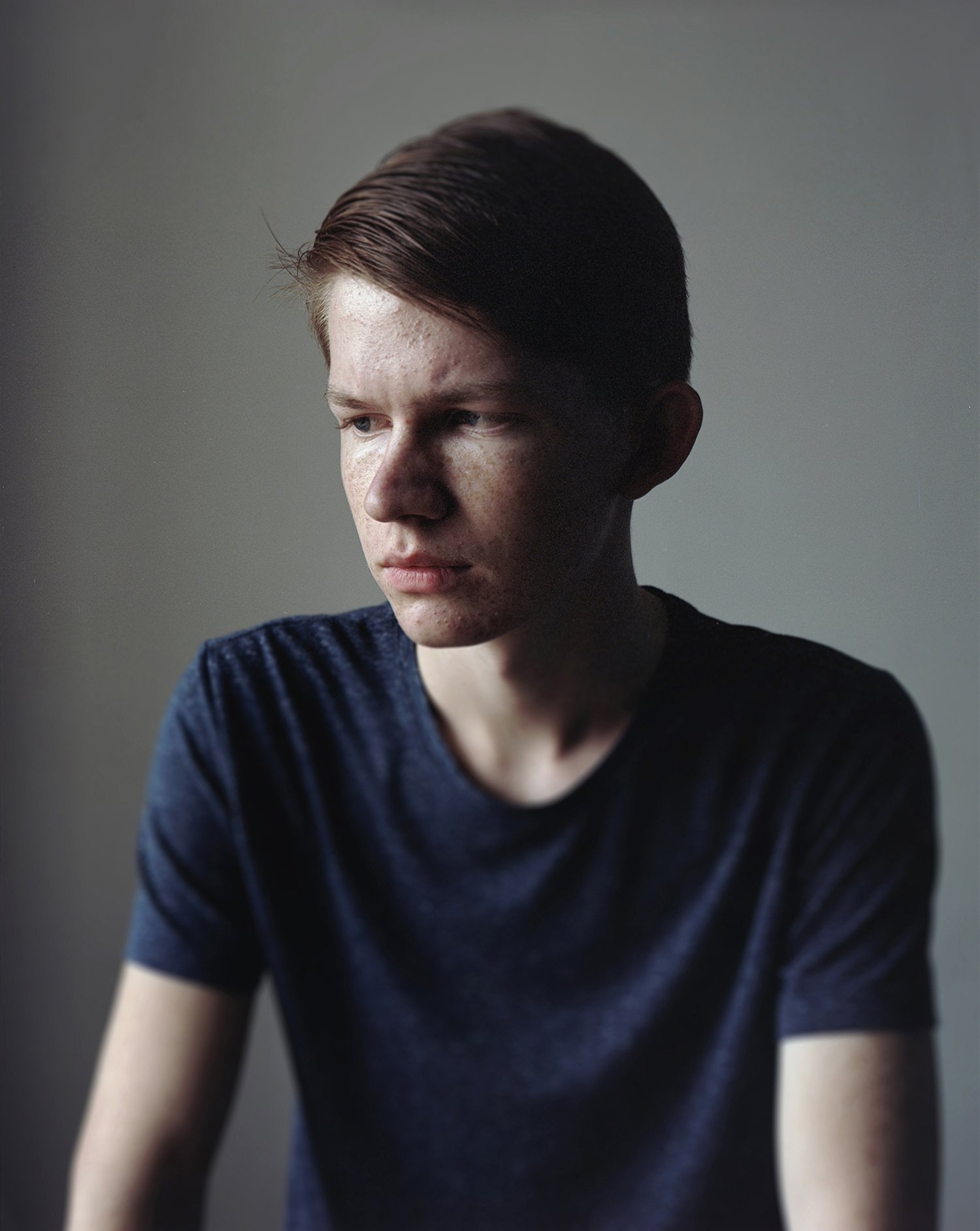Featured Photographer: Elliott Verdier's A Shaded Path
French documentary photographer Elliott Verdier, at the age of 25, has already dedicated his life to photojournalism and documentary photography. It seems fitting that his 2016 series, A Shaded Path, would be received with critical acclaim from the likes of The British Journal of Photography, Lensculture, and Format considering he has always known exactly what direction he wanted his life to take. He distinctly remembers his childhood afternoons spent with his Godfather, combing through his photographic and documentary print collection of far off lands, peoples, and cultures. He loved the idea of these photographers traveling to distant places and living exciting lives as a cultural jet setter with nowhere else to travel to but forward onto their next adventure. These feelings of invigorating wanderlust would propel him to pursue a career as a photojournalist.
In 2012, at the age of 19, Verdier officially began his journey to become the photographer he had always wanted to be. He successfully applied for and received a grant from the National Zellidja Scholarship Foundation, an organization that equips young men and women under the age of 20 with the funding necessary to experience life in an autonomous way. The condition of this grant is that the individual receiving it must travel alone, and for at least one month, to further the organization's goal of enlightening them at a crucial stage of their development, to “develop essential qualities for them, businesses, society”. It was via this grant that Verdier was able to embark on his first documentary project as a photographer.
With funding in hand, Verdier traveled to Burma (Myanmar) and Thailand to create a project titled The Care Villa: A Residency for Karen’s Hope. His project captured a series of portraits of former rebel soldiers of the Karen National Liberation Army who had been victims of land-mines in their fight against the Burmese state for Karen Independence on the border between Burma (Myanmar) and Thailand. It was through his experience with this project that Verdier was accepted to Les Écoles de Condé, a photography institute in Paris, France in September 2012. Verdier graduated from the institute in June 2015, but the majority of what he learned was through his experiences continuing to document the people and conditions of Southeast Asian countries. Throughout his educational career he consistently traveled back to Burma (Myanmar) and Indonesia during summer breaks in his schooling schedule.
In 2014, he traveled to Cisarua, Indonesia to learn about and document the Afgahn refugees in a perpetual state of transition on their journey to find permanent refuge. He did this by spending a month with three Afghan refugees, living with them in the slum area they were restricted to and getting to know them personally. He of course learned that they had terrible stories and astonishing journeys, but what surprised him was “discovering their lonely boredom waiting for legal papers. I was unconsciously expecting myself to reproduce a painful and dramatic vision of refugees. But the truth is, I was young, without experience, without backup, without contact, without guidelines… I have just ended up in the middle of nowhere, sharing a square room with three Afghan refugees and their daily life, their intimacy; being as bored as them.” Verdier said that this experience “changed my relationship with the people I photograph, and more widely, the way I wanted to document things”. He notated that though his formal photographic education was important he discovered that the one thing that was missing from classical photojournalism culture was intimacy.
In 2016, at the age of 23, Elliott Verdier was now living the life he had always dreamed of. He was discovering and capturing cultures, places, and events from around the globe as a photojournalist. Freshly out of photography school since the previous September, Verdier had his eyes set on a new location to explore and learn about: Kyrgyzstan. He remembers his interest being sparked in this country because he had “literally never heard of this country before and felt quite shameful about that. I started doing some research on it and found very little information. So I decided to go for a month to see it for myself first”.
In June 2016, still knowing very little about Kyrgyzstan's history, Verdier stepped foot in the country for the first time to photograph its capital Bishkek and surrounding areas. He was able to witness first hand the country’s timeworn landscapes that have been inhabited by a series of independent tribes and clans and has periodically fallen under foreign domination - most recently by the Soviet Union, from 1919 until it attained its sovereignty as a nation-state in 1991, after the fall of the Soviet Union. [1]. He remembers the first sight he saw upon arriving: “It was dawn. The soft pink light of the rising sun was touching the wall of mountains in the south of Bishkek. It was all quiet. Everything there seemed eternal”.
Verdier’s A Shaded Path is the story of the Kyrgyz Republic, a landlocked former republic of the Soviet Republic. More commonly known as Kyrgyzstan, this land locked central Asian country is surrounded on all sides by four other countries including the former Soviet states of Kazakhstan, Tajikistan and Uzbekistan, with China taking up it’s eastern border. The country itself is covered by the mountainous region of the Tian Shan which covers a staggering 80% of the country. Due to it’s unique geography its borders are farther from the sea than any other individual country which results in all it’s rivers flowing into closed drainage systems which do not reach the sea. [2]
Over the last three decades, the country of Kyrgyzstan has struggled to find stable footing in the post-industrial era. The fall of the Soviet Union took Kyrgyzstan's economy with it, but also granted this region's people a national identity. Via this new identity there has been inevitable political instability: the region has seen two revolutions and over twenty prime ministers. Similar to the countries political uncertainty, the people themselves are at a crossroads. Stuck between the former glory of their Soviet identity and economy and it’s aging infrastructure, Verdier observed: “I noticed it at first with the old people I’d met. You can feel their confusion living in a country full of doubts. A lot of things there didn’t change with the fall of the USSR; they just got old. Cities of course, but minds also. There is also pride. The USSR was powerful, and Kyrgyzstan was a part of this power. Today it is a forgotten, voiceless country”. [3]
Verdier’s first month long exhibition to Kyrgyzstan to capture the region and people who occupy it in June 2016 was in many ways similar to the country’s own character of uncertainty. Initially setting out with digital photography equipment for this project because “the thought of wandering around with a studio view camera of 15kg during winter in Kyrgyzstan was not such a good idea”. Upon returning home with his digitally created images he was met with feelings of disconnection and dissatisfaction. Though the images he created were technically sound, he felt that these images “weren’t deep enough” and appeared “cold and impersonal”. Verdier realized he had been wrong about his assumptions in regards to the medium needed to capture his story.
After Verdier’s return to France he spent the next four months working as a bartender to save enough funds to purchase a 4x5 view camera, 300 sheets of film, and a one-way ticket back to Kyrgyzstan. While working he also applied for a grant from the Marcel Bleustein Blanchet Foundation, a foundation that grants 8,000 Euros to 20 people under 30 that assist them with pursuing their life’s vocation. This foundation’s grant process was competitive and difficult, requiring multiple steps including an in-person interview, which Verdier had in September 2016. This grant would allow him to actually return to France after his stay in the country and develop the film he would shoot in the coming months.
In October 2016, Verdier took the plunge and decided it was now or never, he would return to Kyrgyzstan to finish, or rather start, his project with his new 4x5 view camera which would become A Shaded Path. He didn’t know if he would receive the grant, but he knew he couldn’t abandon his vision for his project to be completed. Looking back on his impulsive decision to return without funds to fly home, Verdier shared with us that he described his desires with a fellow French photographer who simply thought he was crazy. Unlike his past decision to begin this project digitally, this time Verdier was right! A month after his arrival to Kyrgyzstan he was informed that he had been awarded the grant which allowed him the time, funds, and resources to see his project to completion.
Verdier ended up staying in Kyrgyzstan for five months, from October 2016 until February 2017. It was during this time that he found that his internal monologue had evolved from his previous visit due to the length of time he could stay. He shared with us, “It was different in all points. I felt like I was living there, not [visiting] as a tourist”. He was able to spend several days at a time without taking any photographs and not feel guilty for wasting valuable time. He submitted to the natural flow of the culture and was able to take the opportunity to get to know his subjects and surroundings before photographing them. This time spent allowed Verdier to commit to his responsibility as a documentary photographer to be truthful without being invasive. This approach allowed him to tell a story that gracefully harmonizes both storytelling and aesthetics that also brings out his subjects’ humanity in a rewarding way.
Along with this change of time management during this exhibition, Verdier’s project transformed with his new equipment. His subjects’ reception of him was drastically different this time around. He observed that, though superficial in nature, his equipment offered him the respect of the people there. He shared that “People were looking at me so differently than my previous documentary [exhibition], I became a true photographer to them. Very few [individuals] refused to be photographed, they were [now] posing for posterity”. In regards to the choice to capture his project on film Verdier told us that, “We can debate hours and hours about it, but analog is more precious to me. If I want to make a picture of something important, I will do it on film. It leaves something tangible”.
Over the five months Verdier was in Kyrgyzstan he spent the majority of his time in the capital city of Bishkek and the surrounding areas. His travels included visiting Balyktchy, a former important industrial city of the Soviet Union, Mailuu Suu, a town secretly built for uranium extraction, and Tash Kumyr, where most of the population revolved around the mining of coal. During his journeys he observed a strict contrast in the difference between the older and younger populations. Verdier observed that the older residents had a certain nostalgia for the abolished Soviet order and that younger citizens, born after it’s independence, were aching for westernization. He noted that the young people he met were dynamic and motivated individuals who felt dragged down by the country's slow transition to the modern world.
One such encounter that displayed this contrast consisted of meeting a retired Admiral who worked in freight transportation for the fallen Soviet state, who guided them to an old abandon port of Balyktchy. During the height of prosperity it was the main import and export hub for the country that fueled economic growth. Now abandoned, the admiral along with the port, never left their stations. “The admiral was clearly passionate about it, still living in its former glory”. Verdier recalls this meeting: “After a few vodka shots, Ukrainian songs, and thankful speeches, we finally did the portrait”. Though the younger generation may see stagnancy in this Admiral, perhaps he has nowhere else to go beyond remembering both of their once great roles in their previous lives.
Where A Shaded Path excels in capturing the story of Kyrgyzstan is Verdier’s use of capturing it’s beautifully preserved landscapes. Verdier’s landscapes represent how society and environment are intertwined with culture and fate. Though these images are devoid of individuals they clearly show traces of their passage through them. The land there is a large part of its tradition and has shaped its people’s lives since before this land was originally settled. The juxtaposition of landscapes and portraits show that though we may try to overcome and adapt to our surroundings, time has a way of always being on mother nature’s side. The fleetingness of man is captured by nature’s slow and persistent desire to swallow all the things the former Soviet Union had built.
The resulting images that make up A Shaded Path are a consensual conversation with the people and landscapes of Kyrgyzstan that are both honest and intimate. Elliott paints Kyrgyzstan as both a young republic and contradictory never-land where aspirations cross paths with the remains of the Soviet Era that appear frozen in its desolate landscapes and troubled citizens. Though he has dug deep into the countries painful history he has also illuminated its persistent resilience in the modern era. He captured the atmosphere of this place by slicing fragments of its reality - facts- in a successful attempt to dig beneath the surface and reconstruct the shattered pieces of this nation’s story with surprising yet somber vitality. You can still purchase a copy of A Shaded Path by visiting Another Place Press. At the time of publishing this article, there are still 30 copies left of the original 400 edition run.
You can connect with Elliott Verdier on his Website.
Gallery
Citations:
[1] Wikipedia
[2] Wikipedia
[3] Elizabeth Sulis Gear, 2018, A Glimpse of Life in Kyrgyzstan, Feature Shoot, https://www.featureshoot.com/2018/01/a-glimpse-at-life-in-kyrgyzstan/
ABOUT THE AUTHOR
Michael Behlen is an instant film addict and the founder and publisher of Analog Forever Magazine. Behlen is an obsessive community organizer in the film photography world, including previously launching the independent publishing projects PRYME Magazine and PRYME Editions, two enterprises dedicated to the art of instant film. Through these endeavors, he has featured and published 250+ artists from around the globe via his print and online publications.
He has self-published two Polaroid photobooks -“Searching for Stillness, Vol. 1” and “I Was a Pioneer,” literally a boxed set of his instant film work. His latest book, Searching for Stillness Vol II was published in 2020 by Static Age.
Behlen’s Polaroid photography can be found in various publications including Diffusion Magazine, Fraction Magazine, Seities Magazine, and Polaroid Now (Chronicle Books, 2021). He loves the magic sensuality of instant film: its saturated, surreal colors; the unpredictability of the medium; its addictive qualities as you watch it develop. He spends his time shooting instant film and backpacking in the California wilderness, usually a combination of the two. Connect with Michael Behlen on his Website and on Instagram!
























In This Room Will Survive Me, Cindy Konits uses afternoon light, architecture, and expired instant film to examine interiority as something formed in the rooms we inhabit. Through long, uncertain exposures and chance-driven chemistry, her images merge body, space, and memory into scenes that feel lived rather than observed. The work leaves a quiet proposition: our inner lives are shaped in thresholds, light, and time, and rooms continue to shape us long after we’re gone.